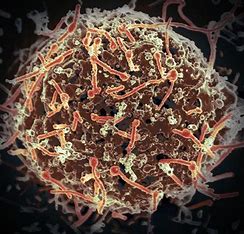Introduction
The Ebola virus, a notorious pathogen, has captured the world’s attention with its devastating impact on human health. This article aims to delve into the history, characteristics, transmission, symptoms, and treatment of Ebola, shedding light on the ongoing efforts to combat this deadly disease. As we explore the intricate nature of Ebola, it becomes evident that a comprehensive understanding of the virus is crucial for developing effective prevention and containment strategies.
The Origin and History of Ebola
Ebola was first identified in 1976 near the Ebola River in the Democratic Republic of Congo (formerly Zaire), hence its name. It belongs to the Filoviridae family, comprising five distinct species: Zaire, Sudan, Bundibugyo, Tai Forest, and Reston. Among these, the Zaire species has caused the most severe outbreaks, with high fatality rates.
Transmission and Incubation Period
Ebola is primarily transmitted through direct contact with bodily fluids of infected individuals or through exposure to contaminated objects. The virus can be transmitted during burial rituals, caregiving, and healthcare procedures. The incubation period ranges from 2 to 21 days, during which infected individuals may not exhibit any symptoms.
Clinical Presentation and Diagnosis
Once the incubation period ends, individuals infected with Ebola start experiencing symptoms such as fever, headache, muscle pain, fatigue, and sore throat. These symptoms are often followed by vomiting, diarrhea, rash, impaired kidney and liver function, and in severe cases, internal and external bleeding. Diagnosing Ebola requires laboratory tests to detect viral genetic material or antibodies in the blood.
Ebola Outbreaks and Global Impact
Since its discovery, several Ebola outbreaks have occurred, causing significant loss of life and socioeconomic disruption. Outbreaks have predominantly affected Central and West African countries, but the 2014-2016 outbreak in West Africa drew global attention due to its unprecedented scale and impact. This outbreak claimed over 11,000 lives, exposing weaknesses in global health systems and spurring the need for urgent action.
Prevention and Control Measures
Preventing and controlling Ebola requires a multifaceted approach. Strategies include early detection and isolation of cases, contact tracing, safe burial practices, infection prevention and control in healthcare settings, and community engagement. The development of effective vaccines and therapeutics has played a pivotal role in recent years, offering hope for improved prevention and treatment.
Global Collaborations and Research Efforts
International organizations, governments, and researchers have united their efforts to combat Ebola. Initiatives like the Coalition for Epidemic Preparedness Innovations (CEPI) and the World Health Organization’s R&D Blueprint for Action have accelerated the development of vaccines and therapeutics. Lessons learned from previous outbreaks have paved the way for more effective response strategies.
The Way Forward: Challenges and Future Outlook
While progress has been made, challenges persist in the fight against Ebola. Socioeconomic factors, weak health systems, and community resistance pose barriers to containment efforts. Strengthening healthcare infrastructure, investing in surveillance and preparedness, and raising public awareness are crucial steps for preventing and mitigating future outbreaks.
Conclusion
Ebola remains a formidable threat to global health, demanding continued vigilance and collaborative efforts. Through ongoing research, improved healthcare systems, and a proactive approach to prevention, we can strive to minimize the impact of Ebola outbreaks and protect vulnerable populations. By learning from the past and working together, we can make significant strides towards eradicating this deadly virus.

